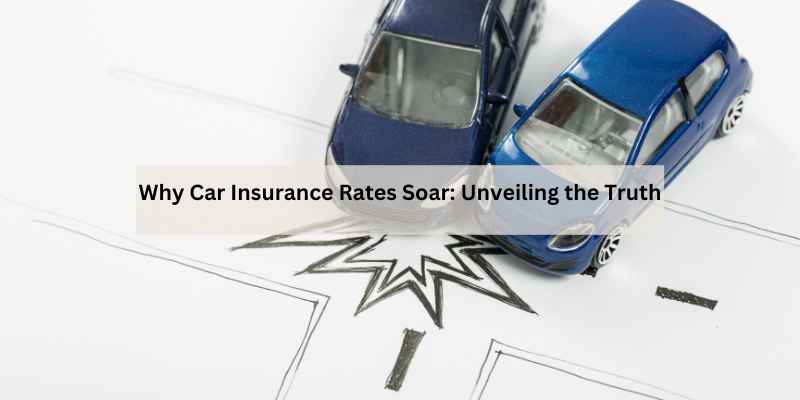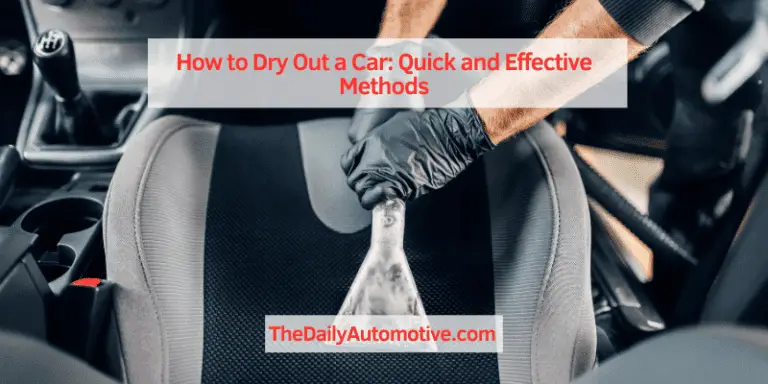Why Car Insurance Rates Soar: Unveiling the Truth
Car insurance rates are rising due to increased repair costs and higher claims frequency. Other factors include inflation and more drivers on the road.
Car insurance rates have been on the rise, leaving many drivers concerned about their premiums. Several factors contribute to this trend, making it essential to understand the reasons behind the increases. The cost of vehicle repairs has surged, largely due to advanced technology in modern cars.
Additionally, the frequency of accidents has climbed, leading to more claims and higher payouts for insurers. Inflation also plays a role, affecting everything from labor costs to parts. As more drivers return to the roads post-pandemic, competition for coverage has intensified, further impacting rates. Understanding these factors can help you make informed decisions about your insurance options.
The Rising Tide Of Car Insurance Rates
The cost of car insurance is rising for several reasons. Increased repair costs play a big role. Cars are now more complex and expensive to fix. This leads to higher claims for insurance companies.
Another factor is the number of accidents on the road. More accidents mean more claims, which drives up rates. Natural disasters also contribute to rising costs. Damage from storms and floods can be significant.
Inflation is another reason for higher rates. The overall cost of living affects insurance rates. Finally, many drivers are using high-tech features in their cars. While these features help safety, they can also increase repair costs.
Navigating Risk: Insurance Companies’ Predicament
Insurance companies face challenges in assessing risk for newer car models. Advanced technology makes cars safer but also more complex. This complexity can lead to higher premiums.
New features like automated braking and collision detection help prevent accidents. Insurers must evaluate these features to set rates. They consider the cost of repairs and parts.
High-tech cars often have expensive components. If an accident occurs, repairs can be costly. This drives up insurance rates.
Consumers can expect rising premiums as technology advances. Understanding these factors helps in navigating car insurance.
Healthcare Costs And Car Insurance
Healthcare costs are rising, impacting car insurance rates. Higher medical expenses lead to increased injury claims. Insurers pay more for treatment, causing premium hikes.
Each claim affects the overall insurance pool. More claims result in higher costs for everyone. Insurers adjust rates to cover these rising expenses. This connection shows why rates keep increasing.
| Factor | Impact on Insurance Rates |
|---|---|
| Healthcare Costs | Increase in injury claim expenses |
| Injury Claims | Higher payouts lead to premium hikes |
| Insurance Pool | More claims raise costs for all drivers |
Legislation And Regulation Effects
State laws greatly influence car insurance rates. Each state has its own rules. These rules decide how much drivers pay. Some states require higher coverage. This leads to increased rates for drivers.
The federal government also affects insurance rates. National policies can change how states operate. Federal regulations may require certain coverage types. This can lead to higher costs for drivers across the country.
Drivers should stay informed about local laws. Understanding these laws can help manage insurance costs. Comparing rates across states may reveal savings opportunities. Knowledge is key to navigating the insurance landscape.
The Role Of Location In Insurance Pricing
Location plays a big role in car insurance rates. Urban areas usually have higher rates. This is due to more traffic and accidents. Rural areas tend to have fewer cars on the road. Thus, insurance costs are generally lower.
Geographic risk factors affect pricing significantly. Cities often face higher crime rates. More thefts and vandalism lead to increased premiums. On the other hand, rural areas often enjoy lower crime rates.
| Location Type | Typical Insurance Cost |
|---|---|
| Urban | Higher |
| Rural | Lower |
Driving Patterns: The Mileage Factor
Driving patterns greatly impact car insurance rates. More miles driven lead to higher risks. More time on the road increases the chance of accidents. Insurance companies often raise rates for those who drive extensively.
Commuters face a unique challenge. Long commutes result in increased exposure to potential hazards. The more you drive, the higher your premiums may be. This makes understanding your driving habits important for managing costs.
Consider the following factors:
| Factor | Impact on Insurance Rates |
|---|---|
| Annual Mileage | Higher mileage often means higher premiums. |
| Commute Length | Longer commutes increase risk of accidents. |
| Driving Frequency | Frequent driving can lead to more claims. |
The Impact Of Natural Disasters On Car Insurance
Natural disasters greatly affect car insurance rates. Climate change has made storms and floods worse. Insurers face higher costs due to more claims. This results in rising premiums for everyone.
Areas prone to disasters pay the highest prices. Insurers evaluate risks based on location. Homes and cars in disaster zones face higher rates. Insurance companies must cover the costs of repairs and replacements.
Drivers in these areas must be aware of their increased premiums. Understanding this can help manage insurance expenses. Preventive measures can also reduce risks and possibly lower rates.
Fraud And Scams: Hidden Culprits
Insurance fraud costs billions each year. This makes car insurance rates go up. Fraudsters often stage accidents or inflate claims. They deceive insurance companies to gain money. This leads to higher costs for everyone.
Statistics show a rise in insurance fraud cases. In 2021, fraud accounted for about 10% of all claims. This number has been steadily increasing. Many people do not realize how this affects their premiums.
| Year | Fraud Rate (%) |
|---|---|
| 2019 | 7% |
| 2020 | 8% |
| 2021 | 10% |
Consumer Choices And Car Insurance Costs
Consumer choices greatly impact car insurance costs. The type of car affects rates. Luxury cars often lead to higher premiums. These vehicles are expensive to repair. They also attract more thefts. Drivers may face increased insurance costs.
On the other hand, safety features can help lower insurance rates. Cars with advanced safety systems reduce the chance of accidents. Many insurers offer discounts for these features. Examples include automatic braking and lane-keeping assistance. These technologies not only save lives but also save money.
The Future Of Car Insurance Rates
Car insurance rates are increasing due to various factors. Predictive models help companies set rates based on risk. These models analyze data like driving habits and accident history. As technology improves, models become more accurate.
The rise of autonomous vehicles also impacts insurance costs. These vehicles may reduce accidents, but they create new risks. Insurers must adapt to changing liability issues. Understanding how these cars work is essential for rate setting.
In the future, rates will likely reflect new technologies and trends. Staying informed about these changes is crucial for drivers. Knowing how rates are determined can help consumers make better choices.
Frequently Asked Questions
Why Are Car Insurance Rates Increasing?
Car insurance rates are rising due to various factors. Increased repair costs, rising vehicle prices, and inflation contribute significantly. Additionally, more drivers are on the road, leading to higher accident rates. Insurers are adjusting their rates to manage these growing risks effectively.
What Factors Affect Car Insurance Rates?
Several factors influence car insurance rates. These include your driving history, age, location, and the type of vehicle. Insurance companies also consider credit scores and the frequency of claims. Understanding these factors can help you find more affordable insurance options.
How Can I Lower My Car Insurance Rates?
To lower your car insurance rates, consider increasing your deductible. Bundling policies, maintaining a clean driving record, and taking advantage of discounts can also help. Additionally, shopping around and comparing quotes from different insurers can lead to better deals. Regularly reviewing your coverage is essential too.
Is There A Way To Predict Insurance Rate Hikes?
While predicting exact insurance rate hikes is challenging, trends can provide insights. Monitoring industry news, economic changes, and claims data can offer clues. Keeping an eye on your insurer’s policies may also help. Staying informed will prepare you for potential adjustments in your rates.
Conclusion
Car insurance rates are on the rise due to various factors. Increased repair costs, higher claim frequencies, and economic changes all play a role. Understanding these elements can help you navigate your options. Staying informed can lead to better choices and potential savings on your car insurance premiums.
Stay proactive and explore alternatives.







